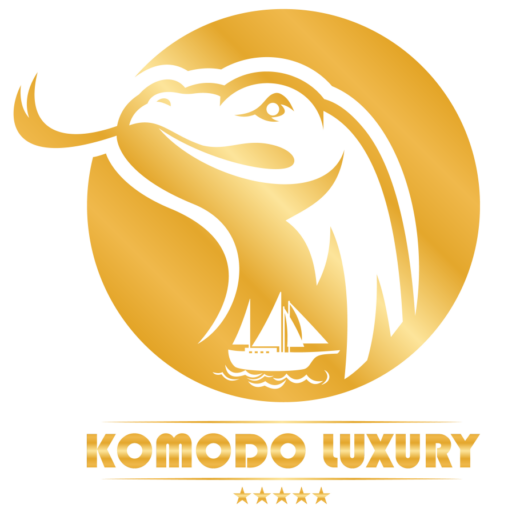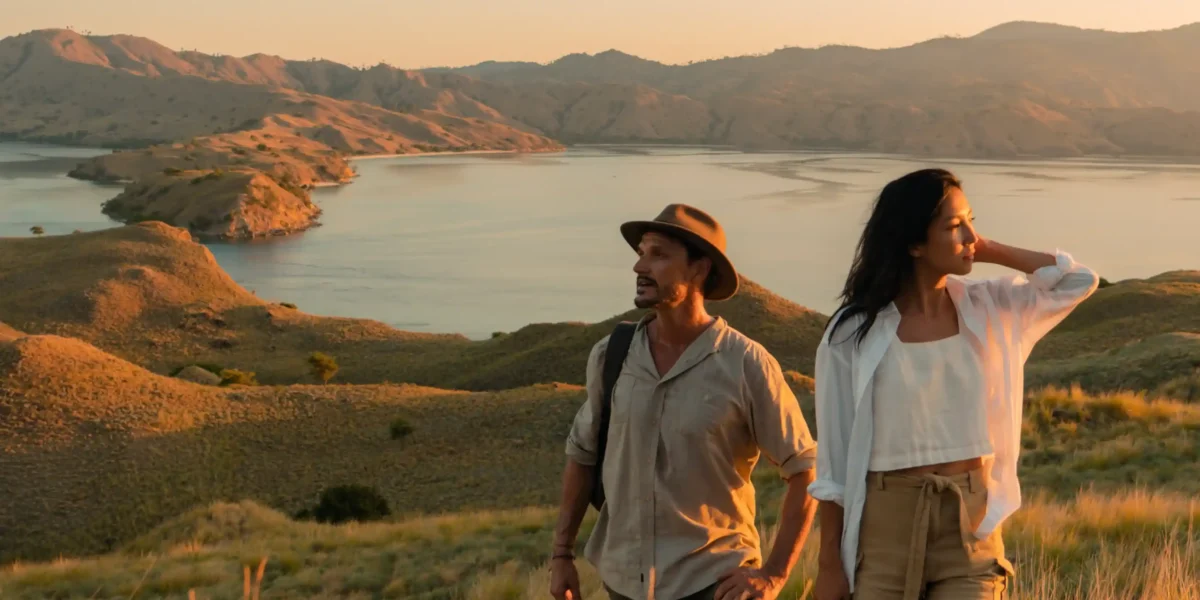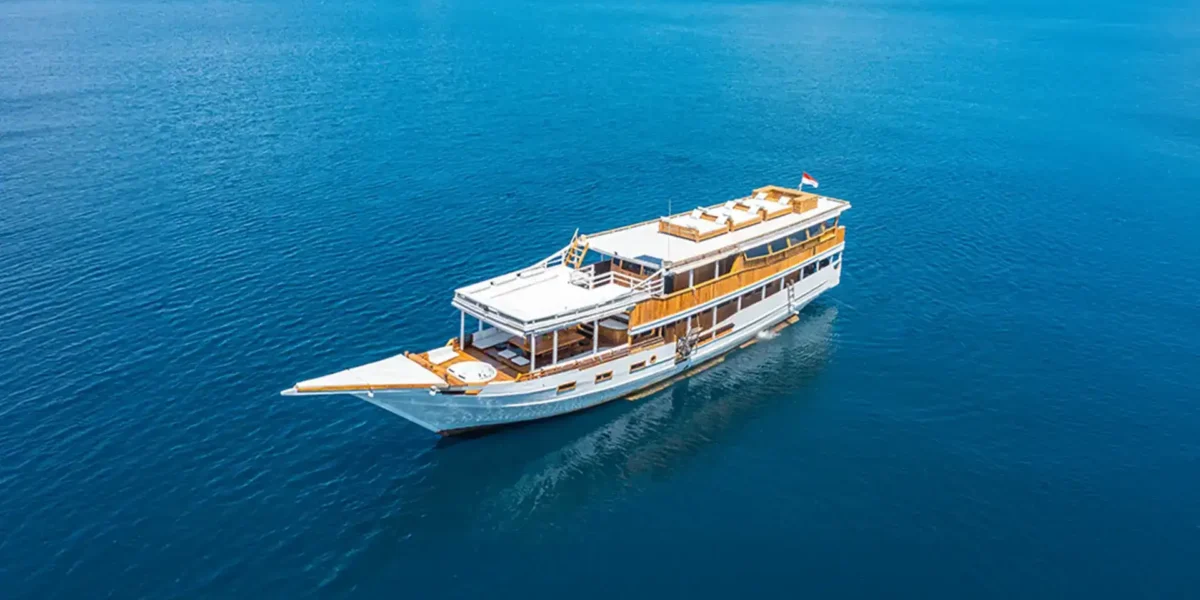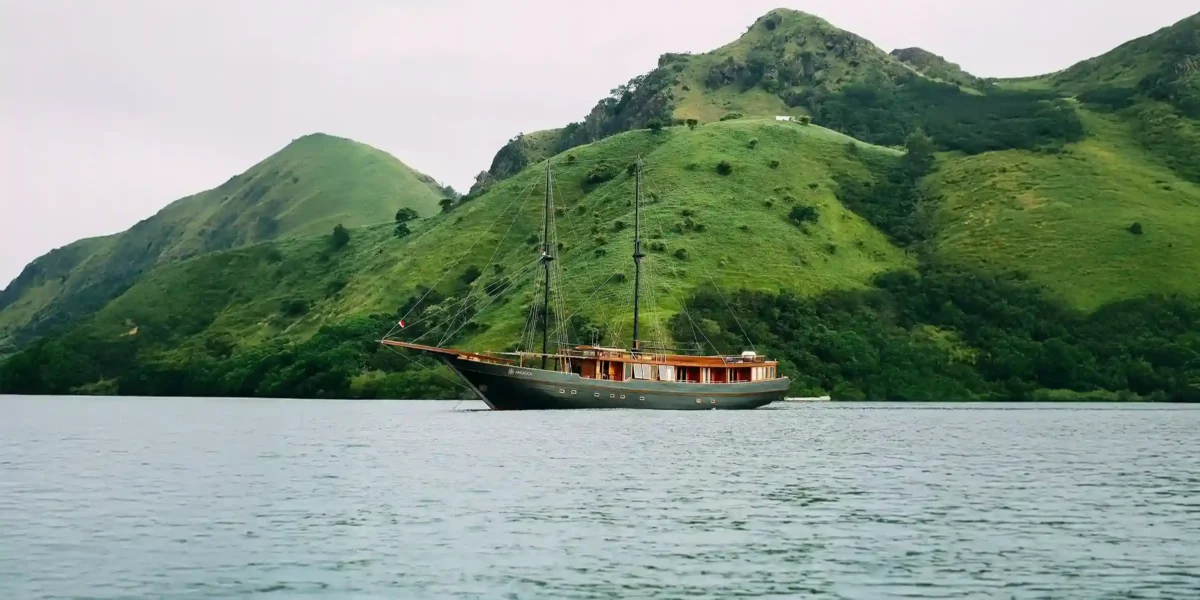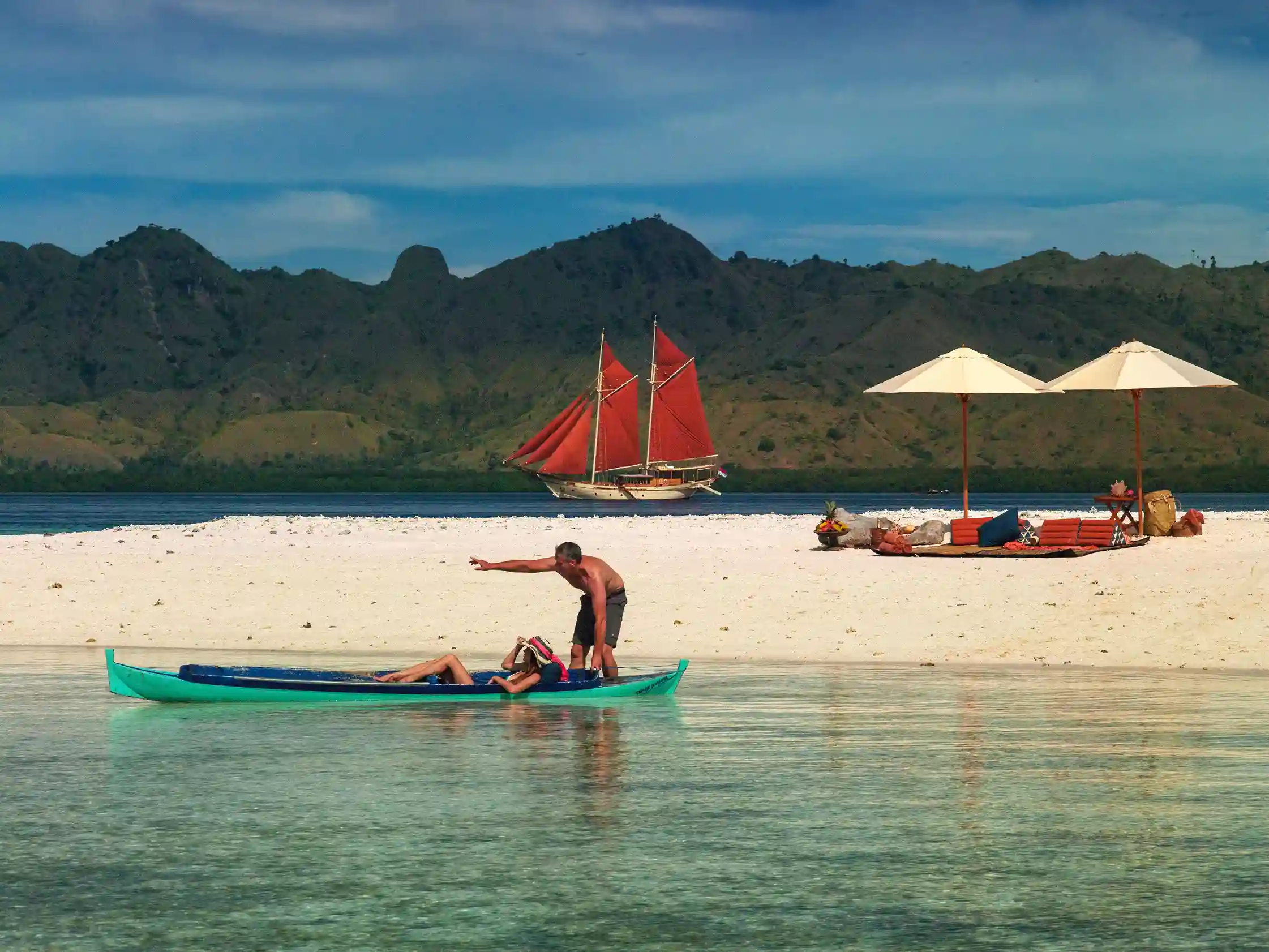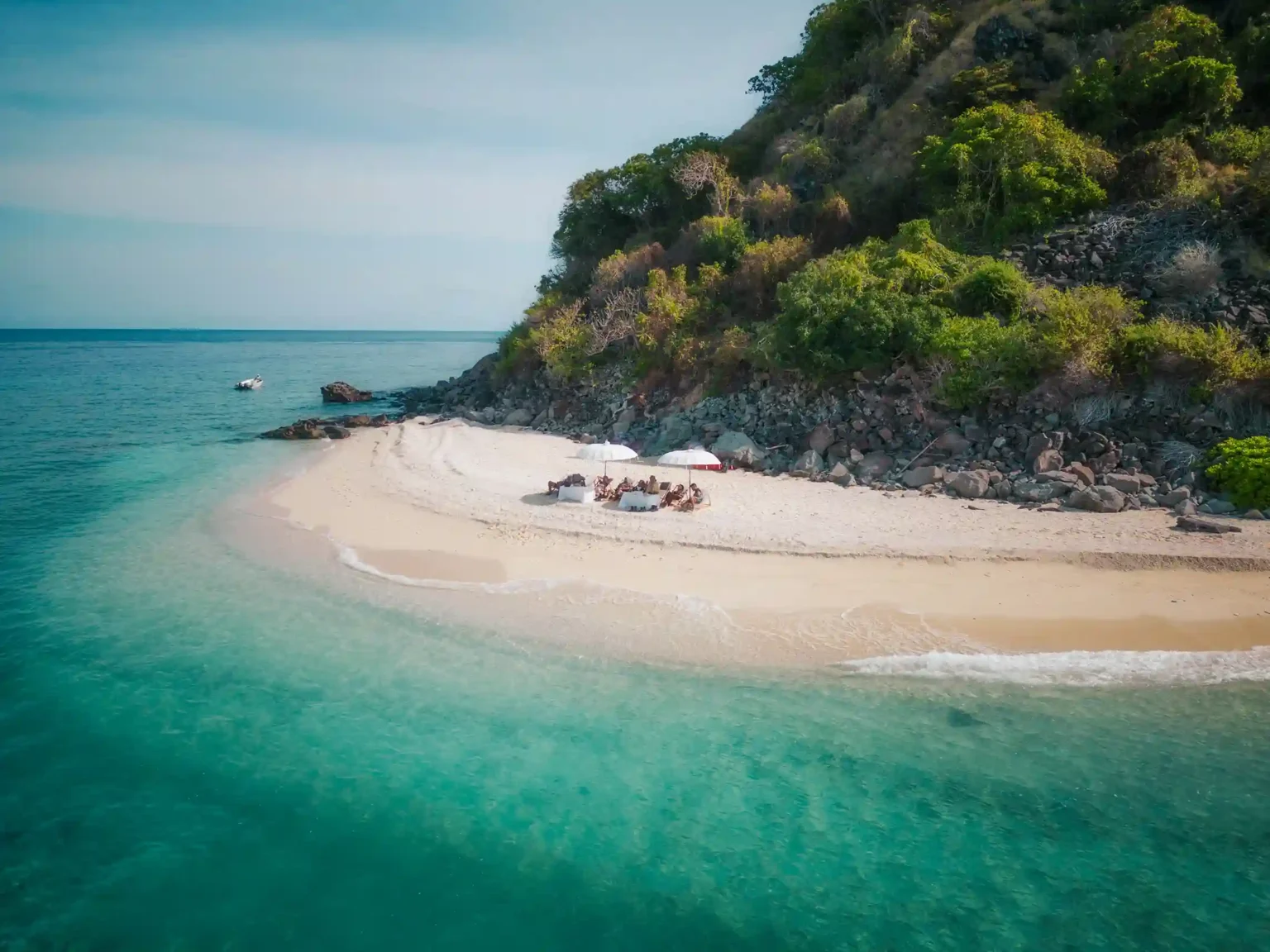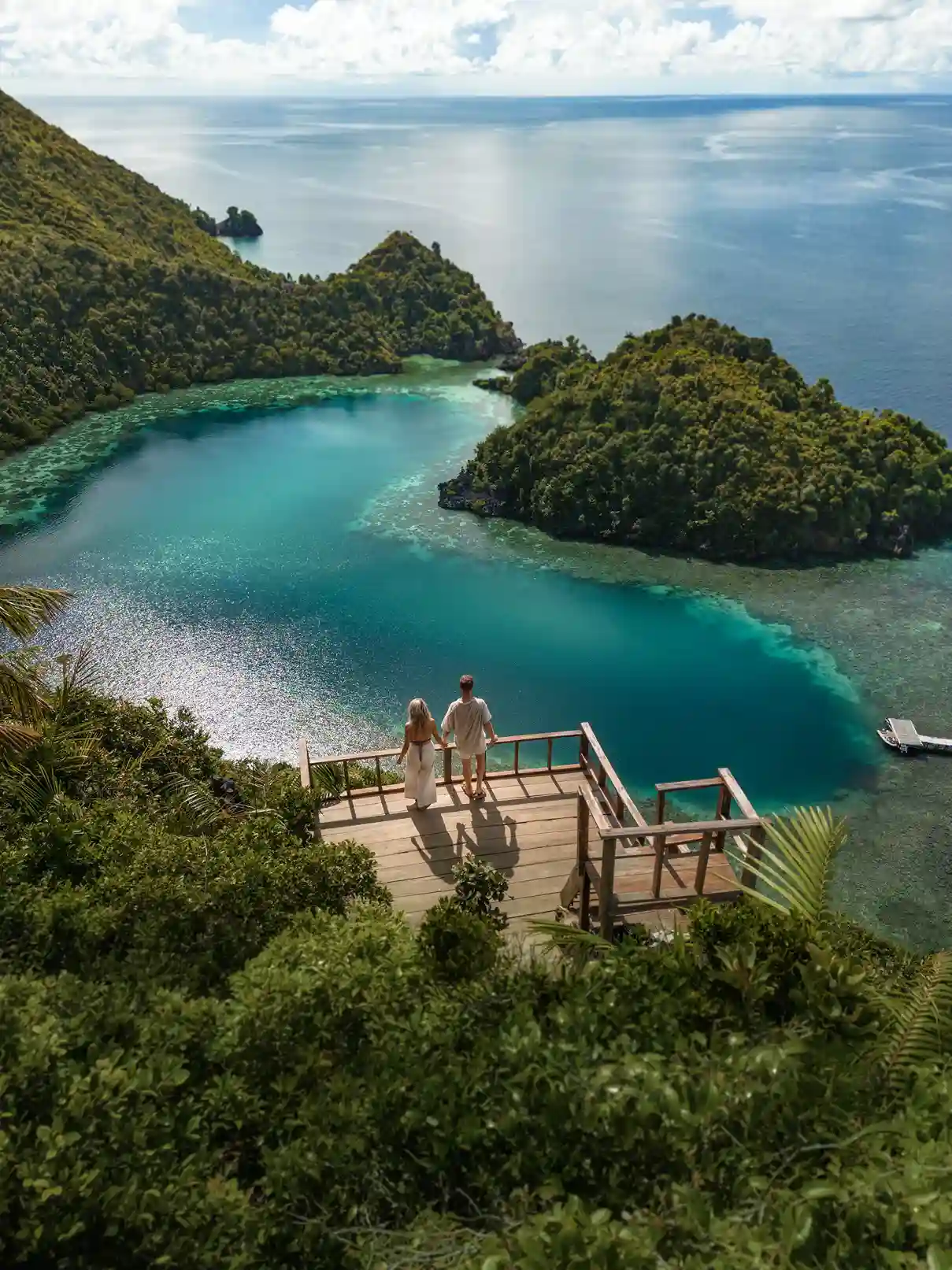Komodo Dragon vs. Alligator: Clash of the Giant Reptiles

Many people love learning about reptiles because of their tough scales, strong jaws, and amazing survival skills. Two of the most famous are the Komodo dragon (Varanus komodoensis), found on Indonesian islands such as Komodo, Rinca, and Flores, and the alligator (Alligator mississippiensis or Alligator sinensis). Both are big and fierce, and are considered among the deadliest reptiles, making us wonder: if they ever faced each other, who would come out on top?
In this article, we’ll look at their physical features, hunting habits, defense strategies, and special adaptations. We’ll also explore what might happen if they actually met.
Komodo: The Ancient Giant Lizard You Won’t Believe Exists
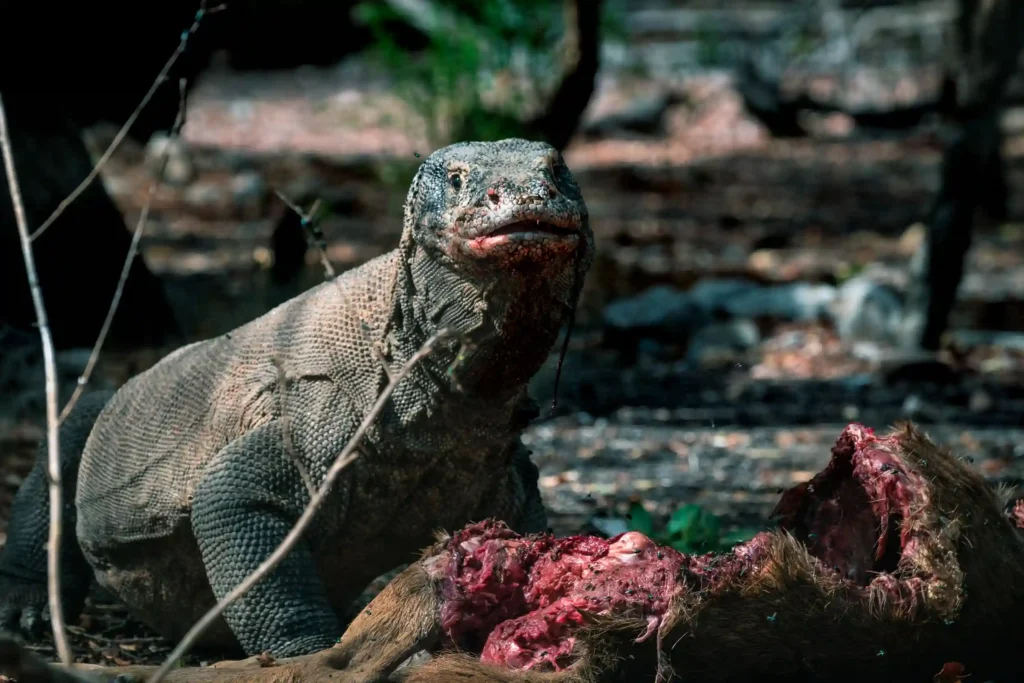
Komodo dragons are often called “king of lizards” because they’re huge and look like they’ve stepped right out of prehistoric times. These reptiles can be found only in Indonesia’s Komodo National Park—which includes Komodo Island and Rinca island. Their average length is around 2 to 3 meters (6.5 to 10 feet), and they usually weigh 70 to 90 kilograms (154 to 198 pounds). Some especially large males can exceed 100 kilograms (220 pounds).
Physical Traits and Behavior
A Komodo dragon’s body has thick scales, a strong tail, and powerful legs with sharp claws. That heavy tail helps them balance when running or pivoting suddenly. Even though they’re not marathon runners, they can sprint up to about 20 km/h (12.4 mph) for a short distance, enough to catch unsuspecting prey.
Their jaws are armed with curved, serrated sharp teeth, which are great for slicing through flesh. The danger of komodo bites is significant, as their powerful bite force, combined with sharp teeth and venom, can potentially kill large animals like a sloth bear. One of their most terrifying traits is their saliva, which contains harmful bacteria and toxin-like proteins that can weaken or infect their prey. A single bite can lead to severe infections if the victim escapes, making it much easier for the Komodo to track and finish the job later.
Diet and Eating Habits
Komodo dragons eat almost any kind of meat, whether it’s a carcass or live prey like deer, wild boar, and even water buffalo. They also show cannibalistic tendencies and can attack younger Komodos if food is scarce. Thanks to their flexible jaws, they can swallow large chunks of meat with ease. After a big meal, they can go several days without needing more food.
Read more: Can Komodo Dragons Swim? Here’s the Fact!
Meet the Alligator: Swamp King with a Secret Weapo
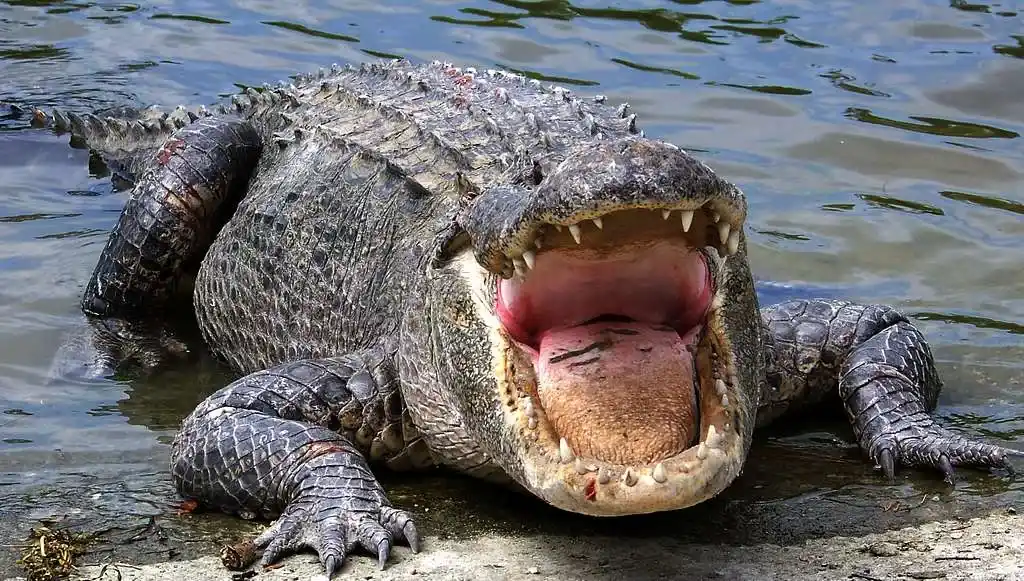
Alligators and crocodiles both belong to the Crocodile order, so they do look alike. Even so, they differ in head shape, tooth placement, and a few other traits. Alligators usually have broader, U-shaped snouts, while crocodiles have slimmer, V-shaped ones. When an alligator closes its mouth, the bottom teeth tend to stay hidden. A crocodile’s bottom teeth often stick out on the sides.
There are two main species of alligator: the American alligator (Alligator mississippiensis), found mostly in the southeastern United States, and the Chinese alligator (Alligator sinensis), which lives in parts of China. The American alligator is the one people see most often in the wild, especially in states like Florida and Louisiana.
Size and Appearance
Male American alligators can grow 3 to 5 meters (10 to 16 feet) in length and weigh hundreds of kilograms. Females are smaller on average. Their thick, dark scales protect them from attacks by other predators. While they appear clumsy on land, alligators are agile swimmers. Their tails work like propellers in the water and can be used as weapons when needed.
Feeding Habits and Hunting Style
Alligators are meat-eaters that prey on fish, turtles, birds, and various mammals. As ambush predators, they often lie in wait at the water’s edge until something comes close. When the moment is right, they lunge forward, grab hold, and perform a “death roll” to tear off chunks of flesh. Even though alligators don’t produce venom, their bite force is enormous—often exceeding 2,000 psi. That’s strong enough to crush bones in a single snap.
Read more: Komodo Dragon vs Crocodile: Who’s the Strongest Predator?
Comparing Komodo Dragon vs. Alligator
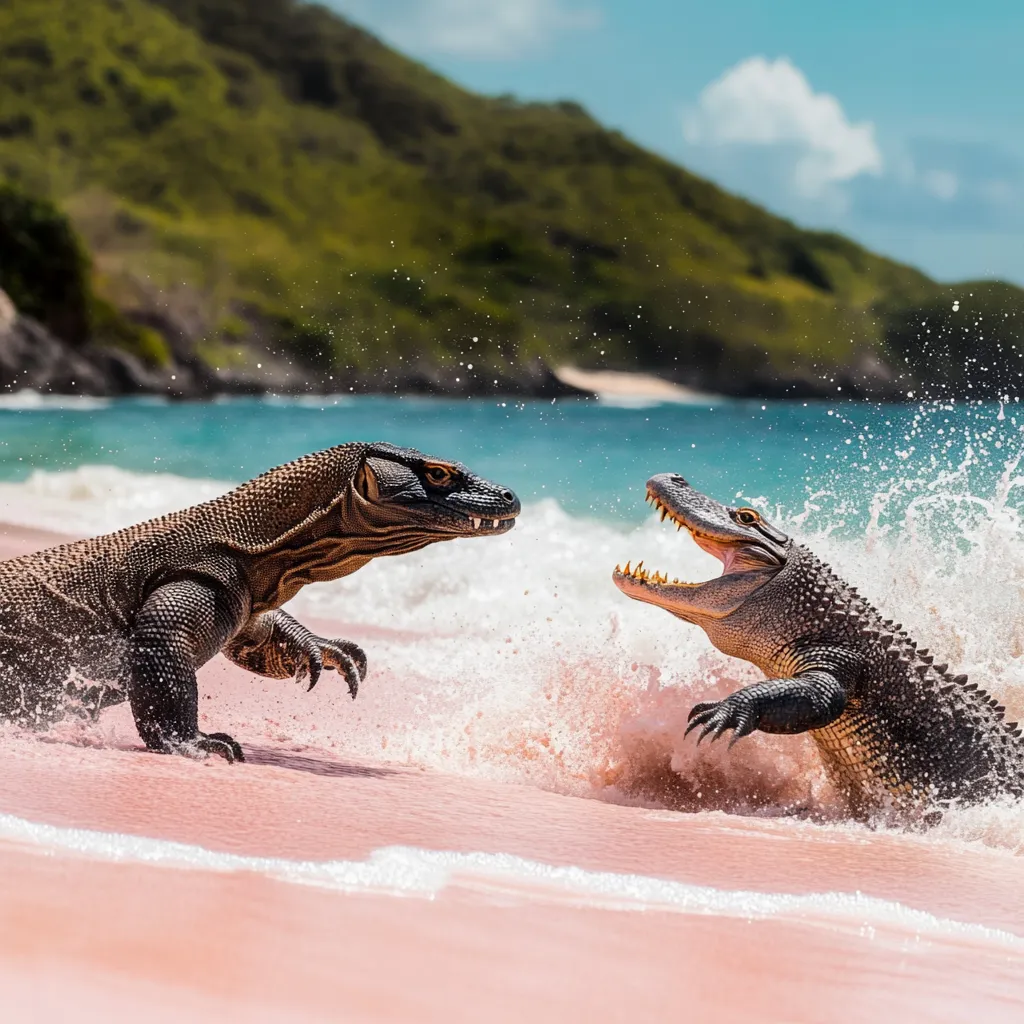
Imagining a fight between these two is like picturing warriors from different worlds. Komodo dragons rule dry, sunbaked islands, while alligators dominate swamps and freshwater environments. Still, it’s fun to see how they stack up.
| Aspect | Komodo Dragon | Alligator |
| Size & Weight | 2–3 m (6.5–10 ft), 70–90 kg (154–198 lb), some over 100 kg (220 lb) | 3–5 m (10–16 ft), can weigh several hundred kg (especially large males) |
| Habitat | Dry land, open fields, scrub areas on Komodo, Rinca, etc. | Wetlands, swamps, rivers, and lakes in places like Florida & Louisiana |
| Hunting Method | Stalk prey, quick bursts of speed, venomous bite, wait for weakness | Underwater ambush, strong bite, “death roll”Main Weapons |
| Main Weapons | Bite with toxic bacteria, claws, strong tail | Extremely powerful jaws, “death roll” |
| Defense | Tail whips, bites, scratches, venom-like toxins | Hides in water, terrifying bite, thick hide on the back |
| Range | Komodo Island, Rinca, Flores, Gili Motang, Gili Dasami in Indonesia | Southeastern U.S. (Florida, Louisiana, and nearby states) |
Physical Differences
Alligators typically grow larger and heavier than Komodos. A full-grown male American alligator can be 4 to 5 meters (13 to 16 feet) long and weigh several hundred kilograms. By contrast, Komodo dragons usually range from 2 to 3 meters (6.5 to 10 feet) and weigh 70 to 90 kilograms, though some exceed 100 kilograms. Komodos are more slender, built for bursts of speed on land. Alligators have powerful tails and stout bodies that help them swim and defend themselves.
Hunting and Feeding
Because Komodo dragons live on land, they rely on short sprints, sharp vision, and a strong sense of smell to track down prey. Their bite carries harmful bacteria and venom-like proteins that can bring down big animals over time. Alligators prefer to lurk underwater. They usually show only their eyes and snout above the surface, then spring up when something comes near. After biting, they often twist in a “death roll” to tear their prey apart.
Defense Strategies
A Komodo dragon defends itself with sharp claws, a muscular tail, and that dangerous bite. When cornered, it might swing its tail or slash out with its front claws. An alligator uses water as a shield, thanks to its thick hide on the back and its powerful jaws. If forced to fight, an alligator clamps down with a crushing bite that can shatter bones.
Natural Habitat and Range
Komodo dragons live only in Indonesia’s Lesser Sunda Islands. Their environment is mostly dry, with sparse vegetation and rolling hills. Saltwater crocodiles, on the other hand, are commonly found in northern Australia, thriving in saltwater and brackish habitats such as rivers, swamps, and estuaries. Alligators live in the southeastern parts of the United States, such as Florida and Louisiana, where they thrive in swamps, rivers, and lakes. Because their habitats are so different, they rarely (if ever) run into each other in the wild.
Adaptations for Survival
Komodo dragons have efficient metabolisms and can go several days without eating after a huge meal. Their tough scales help shield them from minor blows. Alligators have nostrils on top of their snouts, letting them breathe while submerged, and they can cope with chilly weather by slowing their metabolism during a dormant period called brumation. They inhabit saltwater habitats, which contribute to their larger size and streamlined body. Both are apex predators, meaning they sit at the top of the food chain in their respective areas.
Komodo dragon vs Alligator: Who Would Win?
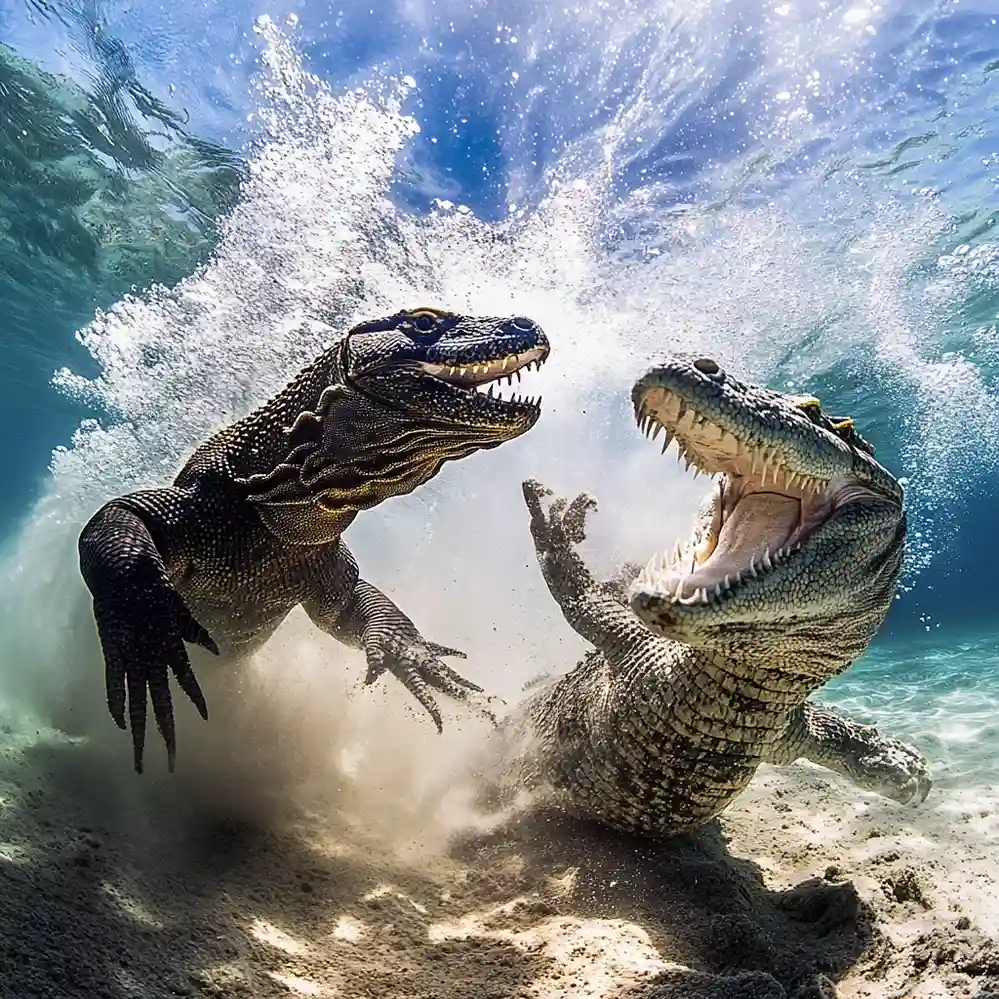
Their habitats are completely different, so a real fight is extremely unlikely. Still, plenty of people wonder what might happen in a showdown:
- Terrain Matters
On open, dry land, the Komodo dragon could use its agility to strike first. In shallow water or marshland, the alligator would probably have the upper hand. - Offensive Power
An alligator’s bite is incredibly powerful. Once it clamps down, it’s hard to escape. Komodo dragons, meanwhile, rely on their toxic bite and sharp claws. - Strategy
A Komodo dragon might look for one well-placed bite and then wait for infection or poison to take effect. An alligator would likely try to rip its opponent apart quickly using the “death roll.”
If they both had the same size and weight, the alligator might win thanks to its crushing jaws. But Komodo dragons have the advantage of a venomous bite and tough claws. On land, the dragon could cause some serious harm fast. In a swamp, the alligator would have a big edge. It really depends on who uses the surroundings best.
See Komodo Dragons Up Close with Komodo Luxury
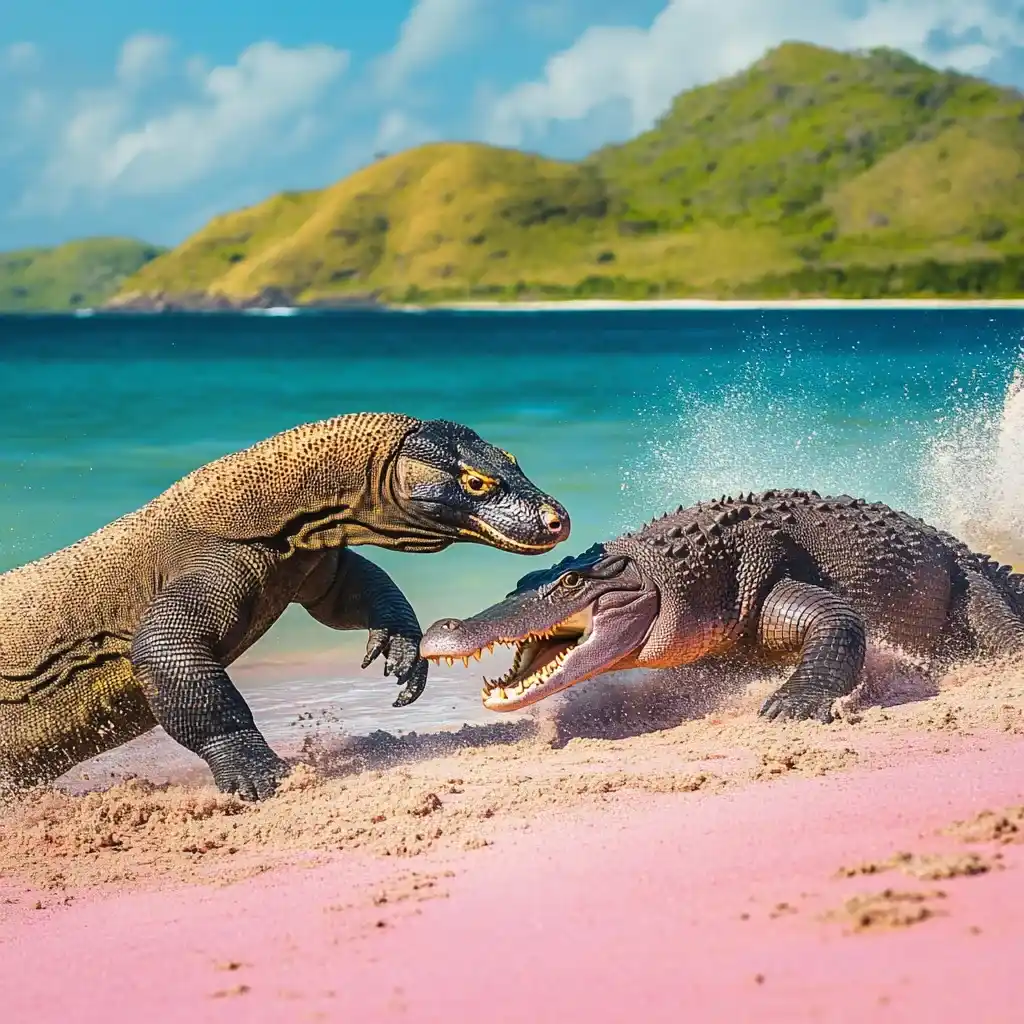
Whether you’re on Team Komodo or Team Alligator, there’s no doubt these reptiles are fascinating. Even though a battle between them is basically a fantasy, they do share something special: they’re living reminders of ancient creatures that have roamed Earth for ages. Both species also need healthy habitats if we want them to thrive in the future.
If you’d like to experience the magic of Komodo dragons for yourself, you can visit Komodo Island in Indonesia. It’s part of Komodo National Park, a protected area that’s home to these incredible lizards. By law, you must explore the island with trained guides who know how to keep both visitors and dragons safe.
Join a Komodo Island Tour with Komodo Luxury
For an unforgettable adventure, consider booking a Komodo Island Tour with Komodo Luxury. You’ll get the chance to see Komodo dragons in their natural habitat and explore breathtaking spots like Pink Beach and Padar Island aboard a luxurious phinisi boat. It’s the perfect blend of comfort and excitement, giving you a real taste of the region’s beauty while letting you meet these rare creatures face-to-face.
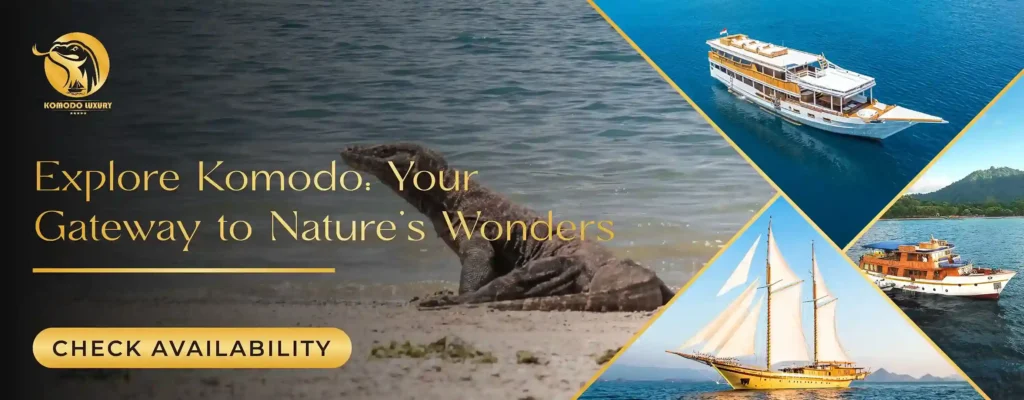
Ready to make the trip of a lifetime? Book now with Komodo Luxury and find out why Komodo National Park is a dream destination for wildlife lovers and explorers alike.
